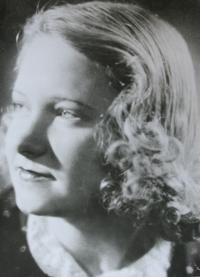Thanks for the wonderful childhood, but it was short

Download image
Jarmila Kubrychtová, née Bradáčová, was born October 6, 1925 in Hostomice. Her parents had met in the same town. Her father originally came from the Vysočina region, but he moved to Hostomice to learn the tailor’s trade there. The whole family then moved several times before eventually settling in Prague-Vinohrady. Jarmila’s parents knew other families who were involved in helping the paratroopers. They had most of these contacts from the Red Cross. The Bradáč family themselves were hiding paratrooper Opálka for two weeks. Jarmila knew about everything. Her father had suspected danger already before the attack on the paratroopers when they were hiding in the crypt of the Sts Cyril and Methodius Church. Jarmila therefore went to Hostomice and she was thus not at home on June 22, 1942 when the Gestapo came to arrest the Bradáč family. She continued to stay in Hostomice and then she began apprenticing as a hairdresser with her aunt in Prague-Podolí. New tenants in their Prague apartment learnt from photographs that Mr. and Mrs. Bradáč had a child. The Gestapo therefore started searching for Jarmila and eventually they arrested her in November 1942. She was interned together with other children of Czech resistance fighters: at first in the Jenerálka chateau in Prague and later in Svatobořice in southern Moravia. She was lucky that she was not sent directly for execution, because she was seventeen years old and such fate usually awaited those who were older than fifteen. She was to take care of the younger children among her fellow inmates. Only after the war she fully learnt about the fate of her parents. She learnt the hairdresser’s trade from her aunt. In 1948 she married and she moved back to Hostomice where she has been living ever since.
